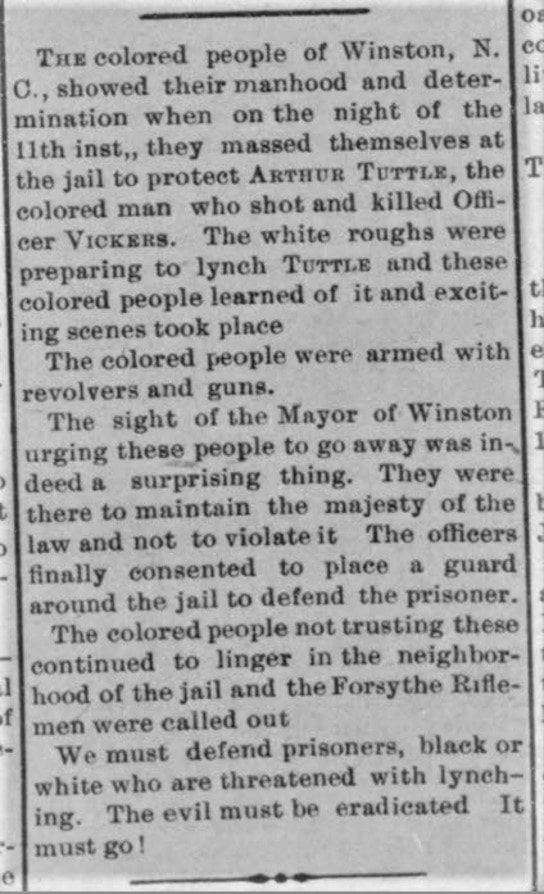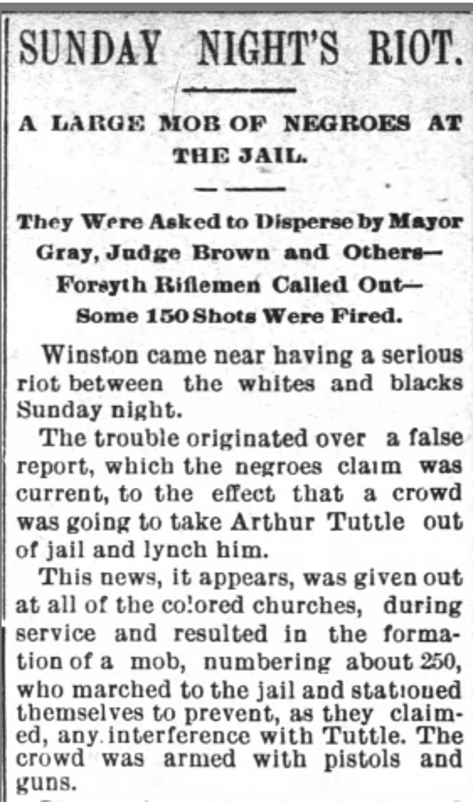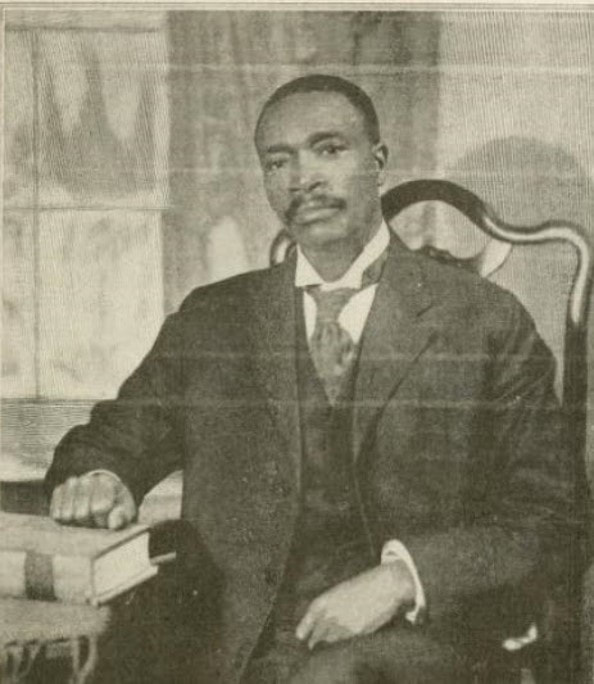"Pluck Enough": The Winston-Salem Riot of 1895
|
Editorial in The Richmond (VA) Planet (17 August 1895). Other than the rumors, no evidence of a planned lynching has survived.
An article in a local white supremacist paper, The Western Sentinel (15 August 1895). As Ida Beard's memoir shows, the rumor of a lynching was also “current” in the white community.
James Sanders Lanier, one of three African American lawyers in Winston-Salem in 1895. They represented some of the 50 men arrested for riot and carrying concealed weapons. Some of the arrested men were represented by white lawyers, but many had no representation.
|
In 1895, Arthur Tuttle was an African American around twenty years of age. In May, the white policeman who had killed his brother, Walter, was acquitted by a jury of white men. Later that day, when two other policemen tried to remove Arthur from a crowded sidewalk to allow white women to pass, a fight started. Tuttle grabbed a gun and shot twice, killing policeman Michael Vickers.
To prevent a lynching, Tuttle was soon moved out of town. A distinguished legal team, funded by some of the local African American churches, requested that the trial be moved to another venue, but the court denied the motion. Tuttle was returned to town and the trial opened on Friday, August 9, and continued through Saturday. On the evening of Sunday, August 11, a rumor swept through town that a lynch mob, men from the countryside, was assembling in nearby woods. Robert Tuttle, an older brother of Arthur, rose after the Sunday evening service and asked members of the congregation to arm themselves and to guard the jail to prevent his brother’s lynching. About 300 responded to Tuttle’s summons and gathered near the jail. When the crowd did not disperse after negotiations, the local militia was called out; someone fired a shot, then the firing became general. A few of the militia were lightly wounded. The number of wounded and killed in the crowd, or even if there were deaths, is not known. In “Pluck Enough”: The Winston-Salem Riot of 1895, I am attempting to create a group portrait of the fifty men who were arrested for “riot” in protecting Arthur Tuttle—where they came from, how they made their living, their family and social networks, the churches they attended, what happened to them. Some of the men I am researching include the following; the information is subject to change based on further research. “Cager” Watt—a cook and restauranteur who was singled out for harsh punishment because he was thought to be a ringleader. Born into slavery, he and his family moved to Harlem around 1900. Sam Toliver—a businessman and an agent for the influential African American paper, the Richmond Planet. His grocery store and home were on Masten’s corner, the location where the men determined to protect Tuttle assembled. He was fined for his part in the “riot.” He later served as an organizer for the local Republican Party. Earnest Day—a laborer, born near the end of Reconstruction. He was sentenced to four months at hard labor on the county roads. He enlisted in the US Army during the Spanish-American War and in 1900 was serving in Cuba. In 1908, he was back in Winston-Salem and got into a fight with a policeman; both were wounded. In 1910, he was in jail serving hard labor. In 1938, he applied for Social Security. Frank Carter—a tobacco worker who also hired his own “stemmers,” he was fined for his part in the “riot.” Early in the following year he was elected to the town Board of Aldermen. He was an officer in the anti-saloon league and the Pythians, a fraternal order, and held a paid town job as school janitor. After running into some financial and legal difficulties, he volunteered to serve in the Spanish-American War, but, like most African American soldiers, he was not sent abroad. Example of social and family networks—The Rev. E. P. Mayo officiated at the 1888 marriage of Yancey Simpson (a tobacco roller arrested for defending Tuttle) and Mary Petrie. One of the witnesses was Walter Tuttle, Arthur’s brother. Walter Tuttle and Yancey Simpson were neighbors on Mack Town Street in 1889. Mayo also officiated at the marriage of Walter Tuttle and Susan Bynum in 1888; Yancy Simpson was a witness. Through his marriage Simpson was probably related to another “rioter,” Ellis Matthews. |


